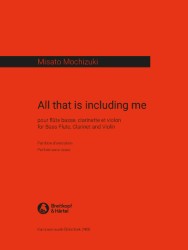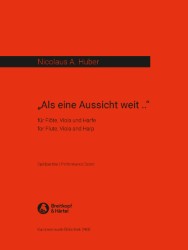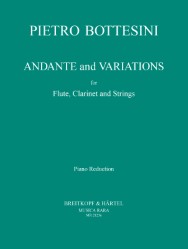Suite Bourgeoise

Composer: Arnold, Sir Malcolm
Instrumentation: Flute, Oboe, Piano
Publisher:
| Product Code: | 979-0-708-01563-5 |
| ISMN: | 979-0-708-01563-5 |
| Publishers Number: | QT63 |
| Published date:: | 2003 |
| Language: | English |
| Page count: | 30 |
| Condition: | New |
Tango (Elaine
Dance (Censored)
Ballad
Valse (Ugo)
Written in June 1940, when Arnold was only 18, Suite Bourgeoise is the first published edition of a very popular and much loved Arnold work.…
Audiences will love it. An alternative clarinet part (replacing the oboe part) is included.
Written for flute, oboe (or clarinet), and piano, it showcases his early flair for wit, melody, and stylistic variety. Though this composition was lost for decades, the suite was rediscovered in 1996 since whenis has become a beloved piece in the wind chamber repertoire.
Audiences will love it. An alternative clarinet part (replacing the oboe part) is included.
The suite unfolds in five short movements:
Prelude: Serious and contrapuntal, it hints at Arnold’s later mastery of texture and structure.
Tango (Elaine): Dedicated to a friend with a famously monotone voice, this movement playfully repeats notes, perhaps mimicking her speech pattern.
Dance (Censored): Originally titled “Whorehouse” before Arnold cheekily crossed it out, this lively piece reflects his irreverent humor and respect for his teacher Gordon Jacob.
Ballad: Marked “with great feeling and tenderness,” it’s a lyrical gem that could easily belong in one of Arnold’s film scores.
Valse (Ugo): A sparkling finale dedicated to conductor Hugo Rignold, whose jazz and motor-racing interests made him a fitting muse for Arnold’s mischievous spirit.
Stylistically, the suite draws on popular dance music, nods to the French group Les Six, and echoes the influence of Constant Lambert, whom Arnold admired deeply.
It’s a youthful yet sophisticated work, brimming with melodic invention and clever character sketches.
The Suite Bourgeoise not only reveals Arnold’s early genius but also his playful defiance of musical norms—a delightful precursor to the bold voice he would develop in later compositions.
About Sir Malcolm Arnold:
Sir Malcolm Arnold (1921 – 2006) is one of the towering figures of the 20th century, with a remarkable catalogue of major concert works to his credit, including nine symphonies, seven ballets, two operas, one musical, over twenty concertos, two string quartets, and music for brass band and wind band.
He also wrote 132 film scores, among these are some of the finest works ever composed for the medium including Bridge on the River Kwai (for which, in 1958, he was one of the first British composers ever to win an Oscar), Inn of the Sixth Happiness (for which he received an Ivor Novello Award in 1958), Hobson’s Choice and Whistle Down the Wind.
Arnold began his professional musical life in July 1941 as second trumpet with the London Philharmonic Orchestra. Acknowledged as one of the finest players of the day, he eventually became the orchestra’s Principal Trumpet.
In 1969 he was made a Bard of the Cornish Gorseth and was awarded the CBE in 1970. He held Honorary Doctorates of Music from the Universities of Exeter, Durham and Leicester – and in America from the Miami University, Oxford, Ohio; he was made a Fellow of the Royal College of Music in 1983 as well as Hon. R.A.M. and Hon. F.T.C.L.
In 1985 Malcolm Arnold received an Ivor Novello Award for ‘Outstanding Services to British Music’, the Wavendon Award in 1985, and a knighthood in the 1993 New Year’s Honours List for his services to music.
The first Arnold Festival took place in October 2006 at the Royal and Derngate Theatre in Northampton, the composer’s birthplace, and is now an important annual event in the British musical calendar.
R.R.P £12.75
Our Price: £12.75
Digital Download – PDF
Shipping costs: No shipping
You might also like
-
All that is including me
£29.00 -
Allegro sostenuto
£58.00 -
Als eine Aussicht weit..
£44.00 -
Andante and Variations
£16.00




